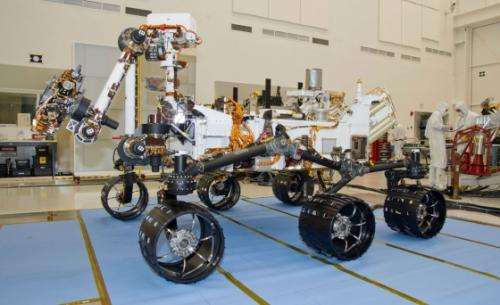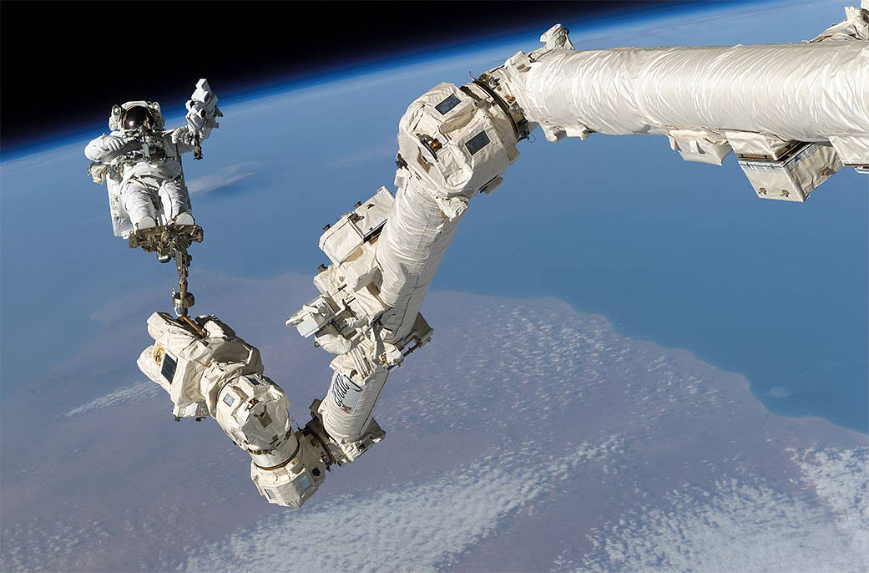Complete-Mathematics Robo Arm Project
CURRICULUM STANDARDS
MATHEMATICS
- Using concepts of angle and measure angles.
- Using concepts of the circle.
- Using concepts of geometry transformation.
SCIENCE
- Understanding motion and forces.
- Identifying aspects of a prototype that can be improved.
TECHNOLOGY
- Developing an understanding of the connections between technologies and other fields.
ENGINEERING
- Developing understanding of engineering design process in designing a robotic arm.
LESSON OBJECTIVES
Students are able to:
- discover relationships between the length and the angle of a robotic arm and the level of difficulty to grab objects.
- identify the important component of a robotic arm mathematically.
- collaborate with their peers in designing a robotic arm.
- design, build, test, evaluate, and modify designs based on how well they meet performance criteria and constraints.
TIME ALLOCATION
Activity 1: 2 x 40 minutes
Activity 2: 4 x 40 minutes
GUIDING QUESTIONS
In this activity you are going to explore, design, collaborate with your friends to discuss the Mathematics Robo Arm Projects.
Think about the following questions.
Who has heard of robotic arms?
What do they consist of?
What are robotics arms used for?
How can we use our knowledge of science and mathematics, technology, and engineering design process to design robotic arms that meet performance criteria and constraints?
ACTIVITY 1
You will have 2 x 40 minutes to finish the following activities.
INTRODUCTION
Robotic Arms
Have you ever heard about a spacecraft equipped called Robotic Arms which could help NASA to explore places that humans cannot visit such as Mars?
Another interesting question is that why does NASA need robotic arms. Not only in space robotic arms are also really important to help people who live on earth. Robotic arms are really significant to help someone who wants to move heavy equipment. Therefore, robotic arms are important in space as well as on earth.
The following pictures are examples of robotic arms. Observe the interesting parts of the robotic arms machines.


GET READY AHEAD
Robotic arms machines are inspired by human arms. Look at your arms which are covered in skin. Look at your arms once again, which parts of your arms allow the movement happened?
If your answers are muscles and bones, so you are correct.
The first activity below is related to human arms. Try to design a human arm then think about the design mathematically.
Sketch a human arm in the following applet. Use the pen and label each part of it and the measurement.
Let say, you are going to design a robotic arm using mathematics. What component do you need to draw? Hint: Geometric shapes
You have three points. You are asked to create the design of a robotic arm with mathematics below. Work in the following applet.
See the following robotic arms video and observe the component of the arms.
CHALLENGES
In these activities, we challenge you to investigate the work of robotic arms mathematically and design a Robo Arm that you can use to grab something.
The following is the simulation of robotic arms. Let say ABC is the robotic arm.
S1. Manipulate angle a (red slider) and b (blue slider) to make the simulation of robotic arm below to touch the inside area of circle.
S2. Manipulate angle a (red slider) and b (blue slider) to make the simulation of robotic arm below to touch the inside area of circle.
What makes the above two simulations different?
What are the components of the robotic arms uniquely affect its performance criteria? In this case, the performance criteria is touching the ball.
S3. Manipulate slider a, b, c, and d to have a best robotic arms that can meet the performance criteria which is touching the purple ball.
What is the effect of the angle on the design? Describe your answer in the following.
What is the effect of the length on the design? Describe your answer in the following.
HOW THE DESIGN WORK
Below is the design, how the movement of the robotic arms works. Learn from the following applet to help you invent your own design later on.
ABC is a robotic arm. Given also three circles white, red, and blue. Find the relationship between the circles and the robotic arm.
S4. Move slider S and T to manipulate the robotic arms.
What have you learned from the above simulation? How can circle help you to design the robotic arm? Hint: Find the relationship among the circles.
The move movement of robotic arm.
Manipulate the following simulation then try to identify how will you connect the components of robotic arms so they pivot efficiently?
S5. Move the sliders to grab the ball.
ACTIVITY 2
You will have 4 x 40 minutes to finish the following activities.
DESIGN AND BUILD
After manipulating the previous simulator, try to reflect on what can you adapt to your own robotic arms. Try to identify which sections should move freely and do not need to move freely.
Try to identify how to make the robotic arm move in the right direction and meet the performance criteria.
This is group work, so kindly collaborate with your peers to deal with this problem.
Draw out your best robotic arm design.
Be sure to label the components. Use ruler and protractor to draw, in particular for drawing components that need measurements such as length and angle.
CONSTRAINTS
The robotic arms, consist of the following components:
1. Shoulder
2. Elbow
3. Wrist
4. Gripper
5. meet the performance criteria which can use to grab the pink ball
Draw out your best robotic arm design.
Construct your design on the following applet.
TEST AND EVALUATE
How well your robotic arms work?
What are two ways you can change your robotic arm to make it better? List these ideas here.